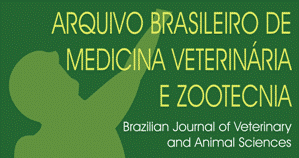O presente trabalho descreve um estudo retrospectivo da casuística clínica de erliquiose em cães atendidos entre março de 1998 e setembro de 2001. Foram analisadas 194 fichas clínicas de animais com suspeita de hemoparasitoses, nas quais 31 cães foram diagnosticados com Ehrlichia canis e 21 com Ehrlichia platys, por meio de exame parasitológico direto de esfregaços sangüíneos. Foram considerados alguns aspectos demográficos (idade, raça, sexo, época do ano e região de origem), características clínicas (temperatura corporal, presença e/ou histórico de carrapatos e sinais clínicos) e hematológicas (hemograma completo e célula parasitada). O número de diagnósticos de erliquiose aumentou consideravelmente a partir de 2000, sendo que 24,4% dos casos ocorreram em animais entre 13 e 24 meses de idade na cidade de Belo Horizonte e áreas peri-urbanas, verificando-se maior risco de infecção em animais que residiam em casas. Os sintomas mais freqüentes foram febre, anorexia, apatia, dor abdominal, linfadenopatia e dispnéia. Quanto às alterações hematológicas, 70,3% apresentaram anemia, 50% trombocitopenia e 30% leucopenia e a maioria das infecções por E. canis foi visualizada em monócitos. Os resultados apontam para a necessidade de maior atenção por parte dos clínicos e técnicos para a erliquiose canina uma vez que 35,9% dos cães atendidos com suspeita de hemoparasitoses apresentavam infecções por E. canis ou E. platys.
cão; Ehrlichia canis; Ehrlichia platys; epidemiologia



